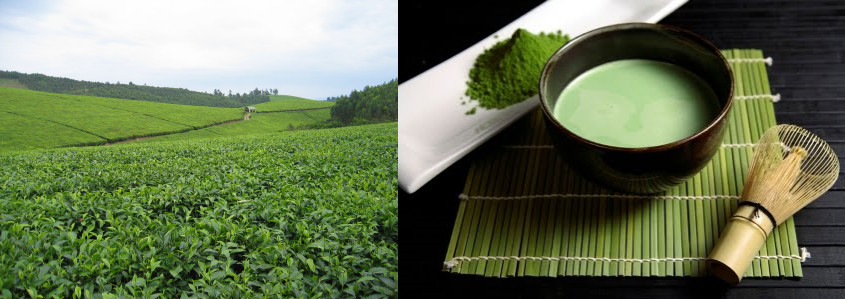History of Matcha
Matcha (抹茶) is finely ground powder of specially grown and processed green tea. It is special in two aspects of farming and processing: The green tea plants for matcha are shade-grown for about three weeks before harvest, and the stems and veins are removed in processing.
The traditional Chinese and Japanese tea ceremony centers on the preparation, serving, and drinking of matcha. In modern times, matcha also has come to be used to flavour and dye foods such as mochi and soba noodles, green tea ice cream, and a variety of wagashi (Japanese confectionery). Often, the former is referred to as ceremonial-grade matcha, meaning that the matcha powder is good enough for tea ceremony. The latter is referred to as culinary-grade matcha, but there is no standard industry definition or requirements for either. Different matcha manufacturers might provide their own definitions.
Blends of matcha are given poetic names known as chamei ("tea names") either by the producing plantation, shop, or creator of the blend, or, by the grand master of a particular tea tradition. When a blend is named by the grand master of a tea ceremony lineage, it becomes known as the master's konomi, or favoured blend.
In Tang Dynasty China (618–907), tea leaves were steamed and formed into tea bricks for storage and trade. The tea was prepared by roasting and pulverizing the tea, and decocting the resulting tea powder in hot water, then adding salt. In the Song Dynasty (960–1279), the method of making powdered tea from steam-prepared dried tea leaves, and preparing the beverage by whipping the tea powder and hot water together in a bowl became popular.Preparation and consumption of powdered tea was formed into a ritual by Chan or Zen Buddhists. The earliest extant Chan monastic code, entitled Chanyuan Qinggui (Rules of Purity for the Chan Monastery, 1103), describes in detail the etiquette for tea ceremonies.
A bowl of matcha on a black lacquered tray with a traditional sweet
Zen Buddhism and the Chinese methods of preparing powdered tea were brought to Japan in 1191 by the monk Eisai. Although powdered tea has not been popular in China for some time, now there is a global resurgence in Matcha tea consumption, including in China. In Japan it continued to be an important item at Zen monasteries, and became highly appreciated by others in the upper echelons of society during the fourteenth through sixteenth centuries.
